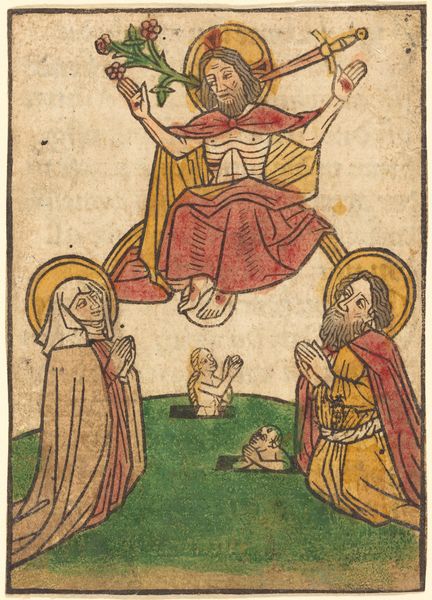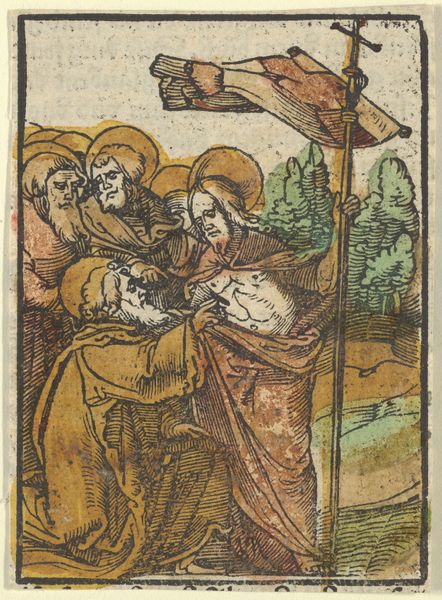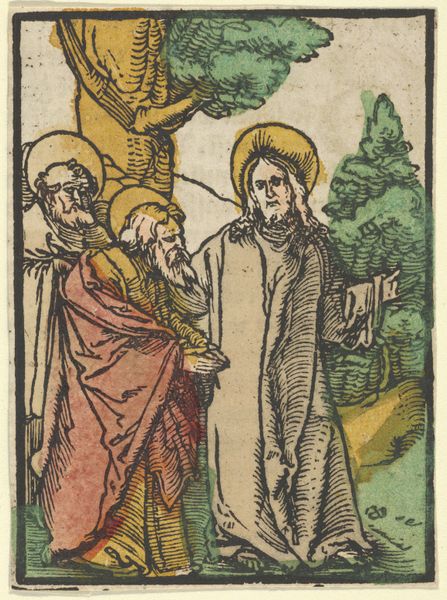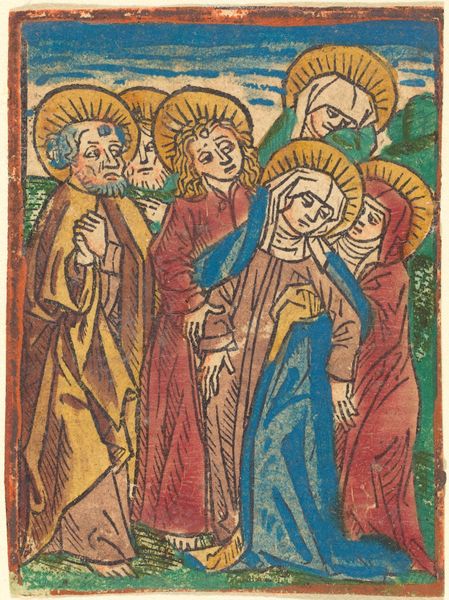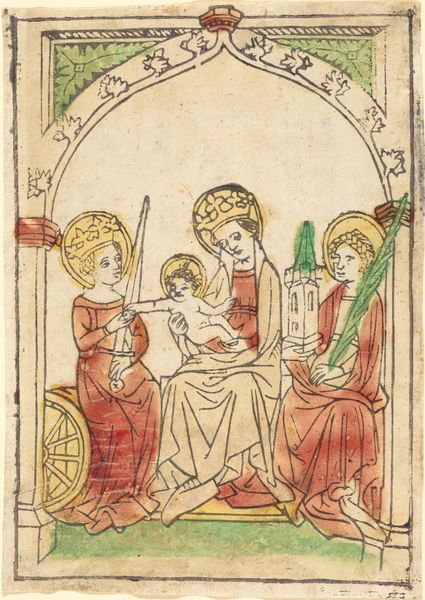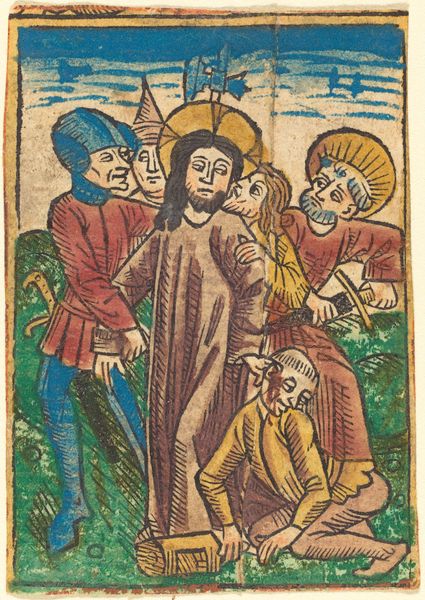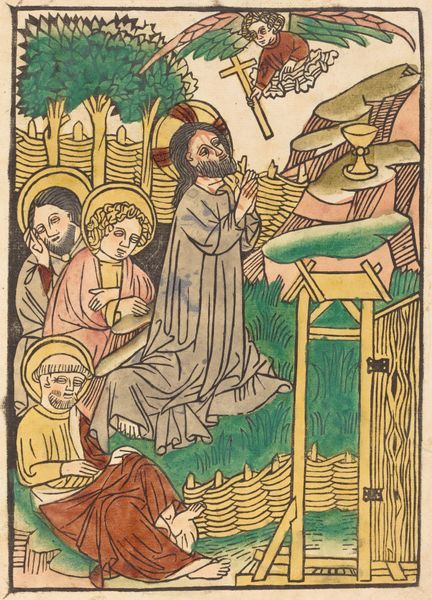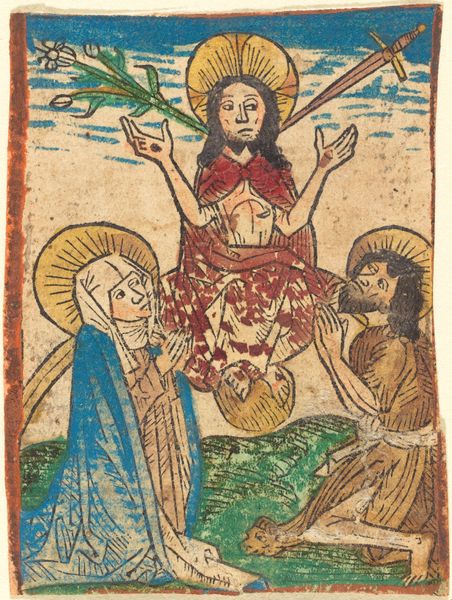
tempera, print
#
medieval
#
narrative-art
#
tempera
# print
#
figuration
Dimensions: Overall: 11.1 x 7.9 cm (4 3/8 x 3 1/8 in.) overall (external frame dimensions): 59.7 x 44.5 cm (23 1/2 x 17 1/2 in.)
Copyright: National Gallery of Art: CC0 1.0
Editor: This tempera print, "The Agony in the Garden" by Ludwig of Ulm, really strikes me with its directness. There's a raw, almost vulnerable quality in the figures and their expressions. How do you interpret this work within its historical context? Curator: That directness is key. Think about the late medieval period – the social anxieties, the rise of humanist thought, and religious tensions brewing. Images like this one aren't just devotional; they're about connecting with human suffering and sacrifice. Where do you see these connections manifest visually? Editor: I see it in Christ's pose – hands clasped in prayer, but also in what seems like resignation. And the disciples seem so burdened by sorrow and confusion. Curator: Precisely. Consider also the figures surrounding Christ; what commentary may the composition offer in the role of identity, gender and race in its day? Are we invited to empathize with not only Christ’s internal conflict, but to draw lines between historical injustices that continue to occur today? Editor: It makes me consider how art like this might've functioned as a point of social connection. By visually representing the suffering of their God, it offered viewers catharsis in their shared sense of marginalization. Curator: Exactly! These images provided a potent visual language for grappling with existential and political anxieties, a way of affirming shared beliefs and a communal identity in uncertain times. Is this method still valid today in art or society? Editor: Definitely, but often through less explicitly religious imagery. Curator: I think so too. Seeing how "The Agony in the Garden" relates to social dynamics then, helps us think about how art now can be so much more than aesthetics, how art gives us new understanding to identity, race and cultural differences across history. Editor: It's fascinating to think about how a seemingly simple image can contain such layered social and political commentary! Curator: Indeed. It shows us that even in the 21st century, art invites ongoing dialogues.
Comments
No comments
Be the first to comment and join the conversation on the ultimate creative platform.
